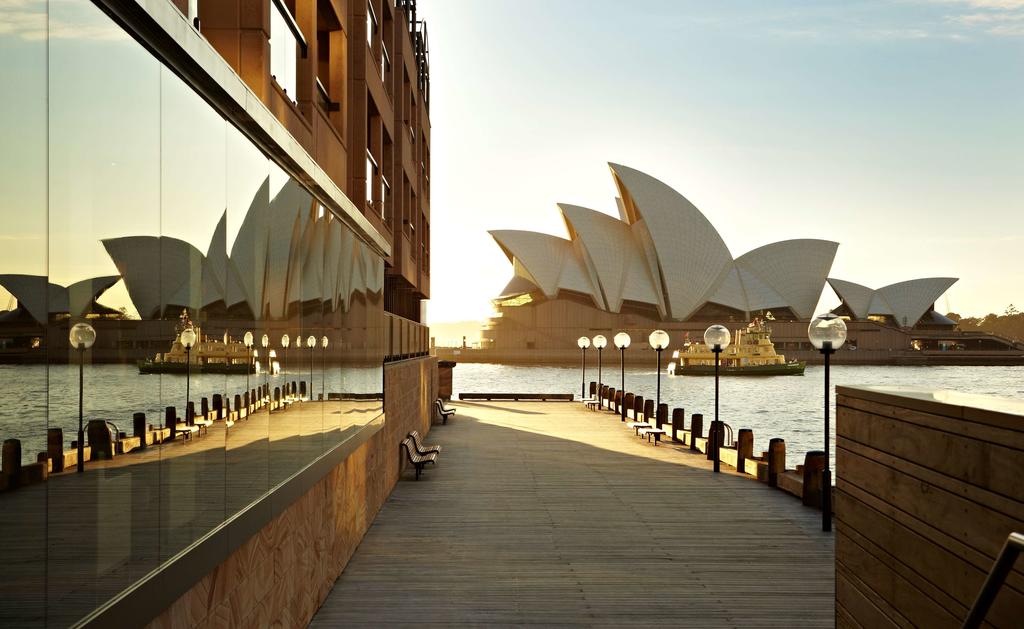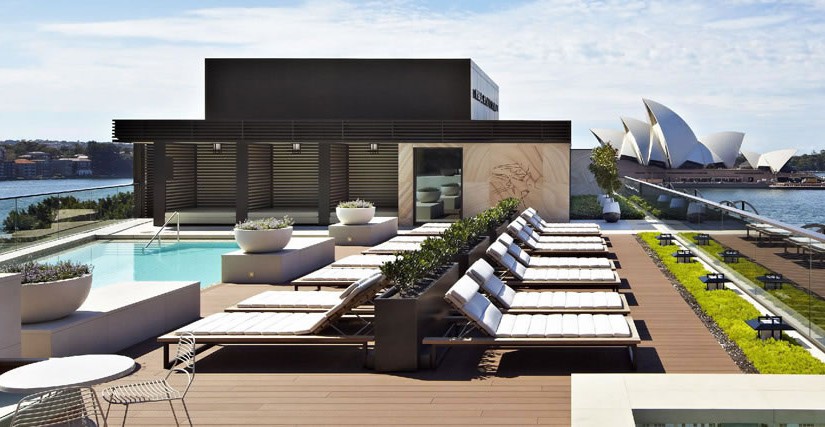Introduction
Facility management (FM) is a broad term that encompasses a range of business areas where businesses operate (Drion, Melissen, & Wood, 2012). One of the core competencies of FM is hospitality management defined by Global Job Task Analysis, IFMA, which is mostly occupied with hotel business. The present report is aimed at defining and explaining the core aspects of hospitality facilities management in relation to Park Hyatt Sydney hotel.
Background
Park Hyatt Sydney is a luxury hotel owned by Hyatt hotels corporation. This company owns total 627 hotels functioning under 13 brand names and covers a variety of price ranges. Park Hyatt is listed in STR Global Chain Scales among luxury hotels, which defines its market positioning among the top-scale audience with above-average pay grade (STR Global, 2015). It represents one of the most successful brands in the industry. The company operates in 56 countries and employs around 110,000 people globally, which places it among the top players on the market. Above that, Hyatt corporation estimated profit for 2016 totals 4.4 billion dollars, which once again stresses the relevance of reviewing the experience of this representative of hospitality management segment (Hyatt Hotels Corporation, 2016).
The main brand was established in 1957 by Hyatt Robert von Dehn and Jack Dyer Crouch but was sold to Jay Pritzker. Park Hyatt was created in the 1980s to unite the company’s most exceptional hotels. It focuses mainly on building and managing average-sized hotels in popular destinations for the wealthy audience.
The hotel philosophy is in letting people enjoy themselves while the company handles all the service. Providing the top quality of care is essential to the brand, and each guest is welcomed and served in accordance with the highest standards in the industry. According to Laird (1994), the design is also an essential part of facilities management. The hotel exterior features modern-style minimalist architecture with the use of primarily natural elements such as wood and glass as it is shown in Figure 1. The same design approach is accommodated in the interior design with the same materials used for decoration of the walls and furniture as it is displayed in Figure 2. Sustainability is the key element that is stressed by the natural elements utilized in the design. As an exclusive feature, the hotel also offers a rooftop swimming pool demonstrated in Figure 3.



Aspects of Hospitality Facilities Management in Relation to Design
As Ransley and Ingram (2012) suggest, the design is an essential part of defining the organizational philosophy. A good designer needs to work closely with a management team to establish a balanced interdependence of the following features:
- Image
- Style
- Customer Comfort
- Operating efficiency
- Technology (Ransley & Ingram, 2012, p. 44).
Image
The image is what the user of services holds in his or her mind as a dominant impression of the hotel. From the organization’s perspective, the image is a means of communication that enables owners to transfer their values to a client. According to the differentiated model elaborated by Hennigs, Wiedmann, Klarmann, and Behrens (2013), clients that often stay in luxury hotels value environmentally positive design as they are extremely concerned for the safety and health that is natural for ‘green’ products and is also represented by ‘green’ design. Above that, when people have satisfied their natural needs such as food, water, and shelter they are more prone to concern themselves with matters of environmental stability (Su, Hall & Ozanne, 2013; Kang, Stein, Heo, & Lee, 2012). Therefore, the use of safe, reusable, and environmentally friendly materials is often preferred in facilities that are oriented at caring for that social layer. Sustainability of design solutions seems to account for a significant part of a successful image making process. This partially explains why Park Hyatt decided to build its philosophy around natural exterior and interior materials, lighting, facility placement and other components.
Style
Another attribute that is key to building appropriate design philosophy is style. The notion of style is elusive and temporary in itself. However, each epoch has its own unique appeal and taking ideas from the past without a sound concept may bring disastrous consequences in terms of profit. Although Douglas (1996) refers to image and style as inferior to building performance, Torres and Kline (2013) suggest that building facilities in accordance with set principles is the key to success. People that have the resources to surround themselves with luxury often do not want to abstain from such practices preferring their environment to have a polished look. Park Hyatt Sydney designer team followed the current trend for minimalism and implemented it both in the exterior and interior solutions. The usage of expensive wood species seems to underline the exquisite taste of its visitors. The lighting contributes to setting the mood, and the mood is central to client satisfaction, which is the ultimate goal proclaimed by Hyatt hotel executives (Hyatt Hotels Corporation, 2016). The experimental study conducted by Susskind (2014) evidenced that proper lighting contributes to enhancing customer experience.
Customer comfort
Customer comfort is another part of the design philosophy that is essential to generating positive experiences for clients and revenue for service providers. As suggested by Walls (2013), comfort ranks among the first items that influence the personal experience of the customers. Since the data in this research is mostly self-reported, it may be considered an expression of the customers’ will. Usually, hotel managers need to consider it in order to develop the organization and provide top-ranked services.
Operating Efficiency
Operating efficiency seems to be a result of effective client attraction and retention strategies (Wang, 2012). Apart from that, it is partially influenced by the client satisfaction, which, according to Assaf and Magnini (2012), correlates with the hotel’s profit. Atwal and Williams (2017), who emphasize the role of customer experience in the success of the hotel’s financial activity and popularity among the visitors, express similar ideas. The opinions of the plethora of researchers suggest that it can be safe to assume that hotels that prioritize client, respect their wishes and cares for delivery of the best experience is often successful and competitive. In relation to facility design, this means that solutions that address the client’s inner wishes and reflect their vision of reality contribute to gaining organizational profit.
Technology
The importance of technology in facility management is immense. The daily life of modern people is filled with digital devices and generates considerable amounts of information flow. The hotel needs to satisfy technological needs depending on the client’s purpose. Technology here includes devices, and means of communication. According to Law, Leung, Au, and Lee (2013). Modern IT technology reveals their relevance when it comes to usability and accessibility of the hotel’s services. Online booking as one of the features that a modern client seems to praise, needs to be present and organized in a way that requires minimum effort to use.
Online notifications are reported to be critical in the client-organization communication process (Law et al., 2013). When the booking status changes or managers need to relay critical information, it is of utmost importance not to disturb a client from his current occupation. Telecommunications in that regard are becoming outdated as fewer and fewer hotels use mobile phones to contact their customers (Law et al., 2013). Such trend could have possibly emerged from the shifting of communication trends towards the Internet as more effective and efficient communication environment. Additionally, it allows to preserve the client’s time as notifications are less intrusive in juxtaposition to phone calls that may disrupt some important activity and result in negativity towards the caller. On the other hand, the hotel needs to be available 24 hours a day and 7 days a week to be able to always provide necessary information because frequent unavailability may result in lower satisfaction with the services.
Conclusion
With the emergence of many brands that claim to be offering luxury services, the competition in the hotel industry toughened. That forces service providers to continuously evolve, putting huge amounts of effort to uphold the status of a top brand. Park Hyatt Sydney represents one of such brands and has a strong identity and an emphasis on sustainability in its design solution. That, according to the many researchers, the findings of which were discussed in the present report constitutes one of the most significant parts of the image. All things considered, there is a considerable amount of factors that influence the success of the brand, including the following:
- Sustainable material use
- Lighting
- Location
- Modern style
- Non-intrusive patterns of communication
- Online availability of services
- Satisfaction of technological needs
The list may continue further, but the idea is that it is the small things that often attract the eye, and attention to detail is often the key to the heart of the client.
References
Assaf, A. G., & Magnini, V. (2012). Accounting for customer satisfaction in measuring hotel efficiency: Evidence from the US hotel industry. International Journal of Hospitality Management, 31(3), 642-647.
Atwal, G., & Williams, A. (2017). Luxury brand marketing–the experience is everything! Journal of Brand Management, (16), 338–346.
Douglas, J. (1996). Building performance and its relevance to facilities management. Facilities, 14(3/4), 23-32.
Drion, B., Melissen, F., & Wood, R. (2012). Facilities management: Lost, or regained? Facilities, 30(5/6), 254-261.
Hennigs, N., Wiedmann, K. P., Klarmann, C., & Behrens, S. (2013). Sustainability as part of the luxury essence: Delivering value through social and environmental excellence. The Journal of Corporate Citizenship, (52), 25-35.
Hyatt Hotels Corporation (2016). Annual report 2016. Web.
Kang, K. H., Stein, L., Heo, C. Y., & Lee, S. (2012). Consumers’ willingness to pay for green initiatives of the hotel industry. International Journal of Hospitality Management, 31(2), 564-572.
Laird, S. (1994). Total facilities management. Facilities, 12(13), 25-26.
Law, R., Leung, D., Au, N., & Lee, H. A. (2013). Progress and development of information technology in the hospitality industry: Evidence from Cornell Hospitality Quarterly. Cornell Hospitality Quarterly, 54(1), 10-24.
Park Hyatt Sydney. (n.d.) Our hotel. Web.
Ransley, J., & Ingram, H. (2012). Developing hospitality properties and facilities. London, UK: Routledge.
STR Global. (2015). STR chain scales. Web.
Su, Y. P., Hall, C. M., & Ozanne, L. (2013). Hospitality industry responses to climate change: A benchmark study of Taiwanese tourist hotels. Asia Pacific Journal of Tourism Research, 18(1-2), 92-107.
Susskind, A. M. (2014). Guests’ reactions to in-room sustainability initiatives: An experimental look at product performance and guest satisfaction. Cornell Hospitality Quarterly, 55(3), 228-238.
Torres, E. N., & Kline, S. (2013). From customer satisfaction to customer delight: Creating a new standard of service for the hotel industry. International Journal of Contemporary Hospitality Management, 25(5), 642–659.
Walls, A. R. (2013). A cross-sectional examination of hotel consumer experience and relative effects on consumer values. International Journal of Hospitality Management, 32, 179-192.
Wang, X. L. (2012). Relationship or revenue: Potential management conflicts between customer relationship management and hotel revenue management. International Journal of Hospitality Management, 31(3), 864-874.